The Joseph Charles Cirese, Sr., and Central Bank of Kansas City Gallery
Introduction
Text-to-speech Audio
The Joseph Charles Cirese, Sr. and Central Bank of Kansas City Gallery focuses on the period from the 1910s until the 1940s. The era was a time of physical and economic growth for the city, but while Kansas City's industries thrived, so too did its crime. The gallery includes exhibits that center on Pohibition and the rise of "Boss Politics". In Kansas City,Thomas J. Pendergast created a political machine that blended corruption and cronyism with pragmatic responsiveness to at least some of the needs of local residents, in order to secure electoral victory for over two decades. One of the most powerful political machines in the country, The Pendergast Machine lasted from the late 1920s until 1939,when Pendergast was imprisoned for income tax evasion. The exhibit includes the history of the political machine that controlled neighborhoods as well as the development of jazz, women's suffrage, booming industries and growth of the city, and the experiences of immigrants and people of color who contributed to the city's continued growth.
Images
Flourishing Populations & Industries Label
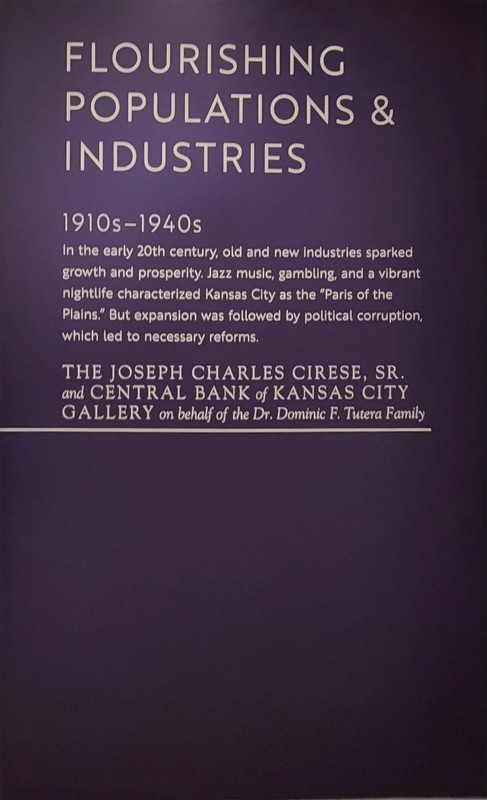
Bennie Moten Label
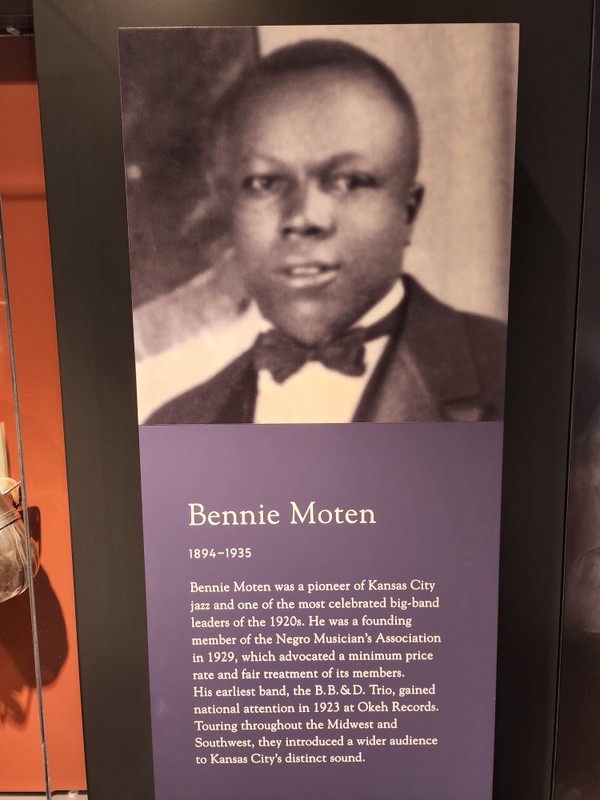
Julia Lee and William J. Berkowitz Label
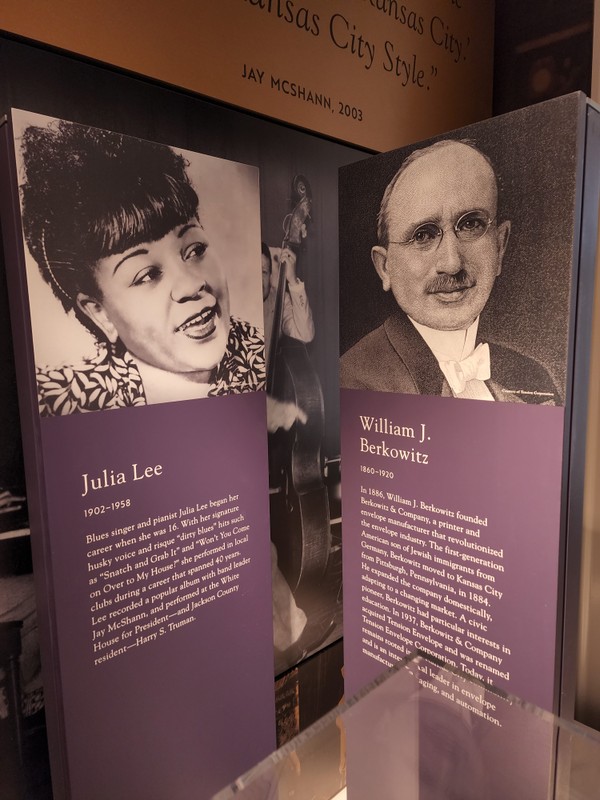
Kansas City - "Boss Politics" Label
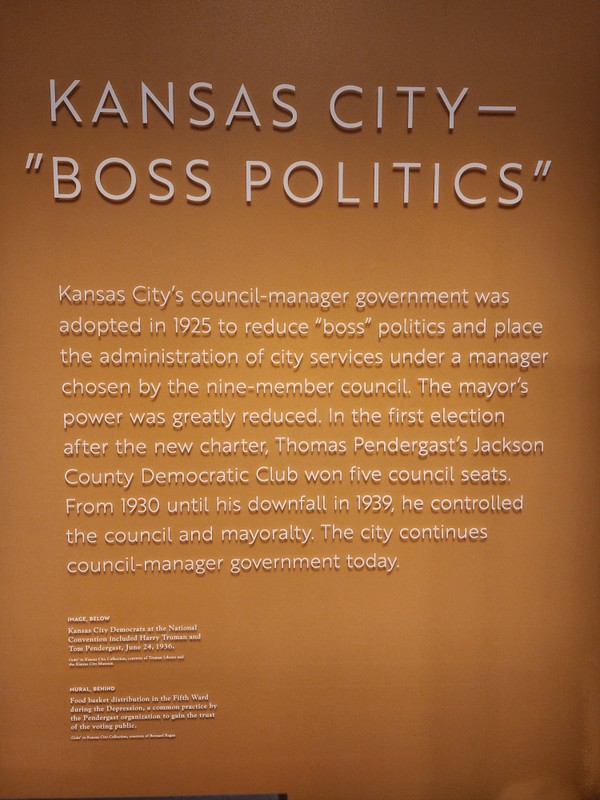
Thomas Pendergast Label
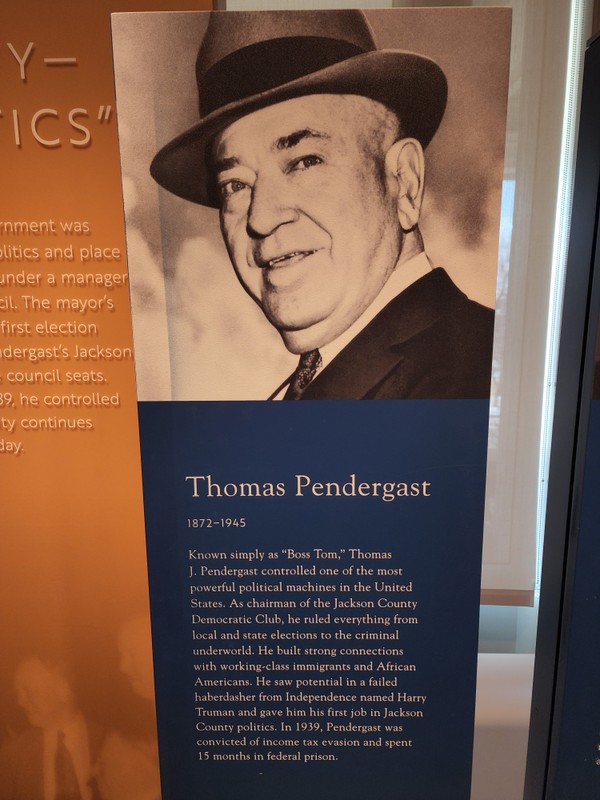
Women's Suffrage Banner
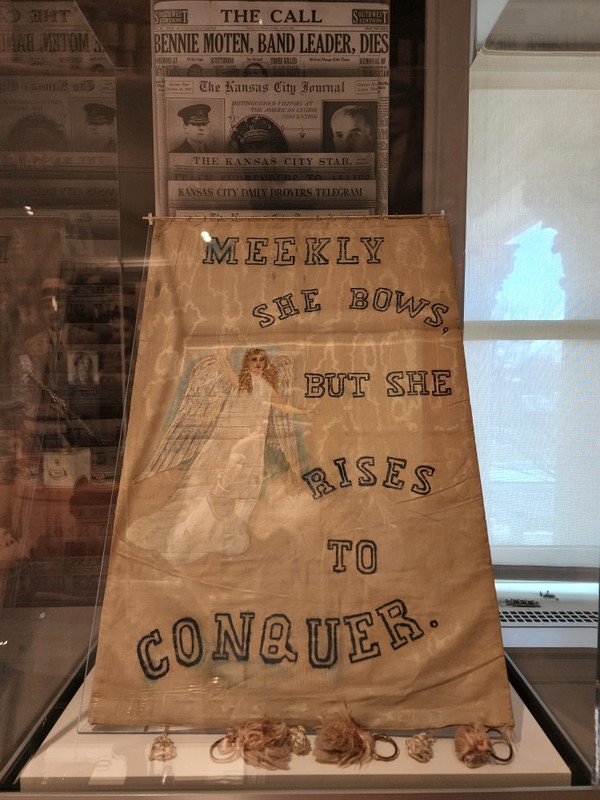
Growing Industries and Work Forces Label

Joseph Charles Cirese, Sr. Label

Records, Instruments, and a Jukebox on display
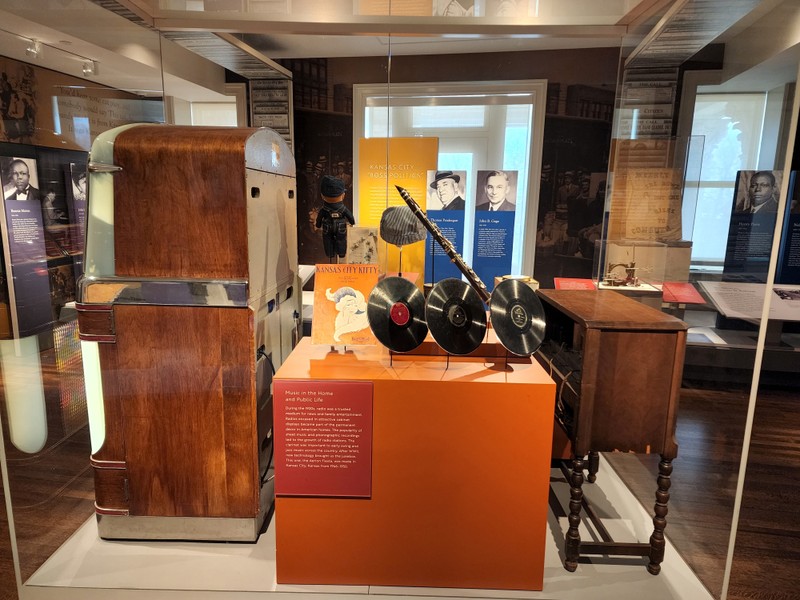
Jukebox on display
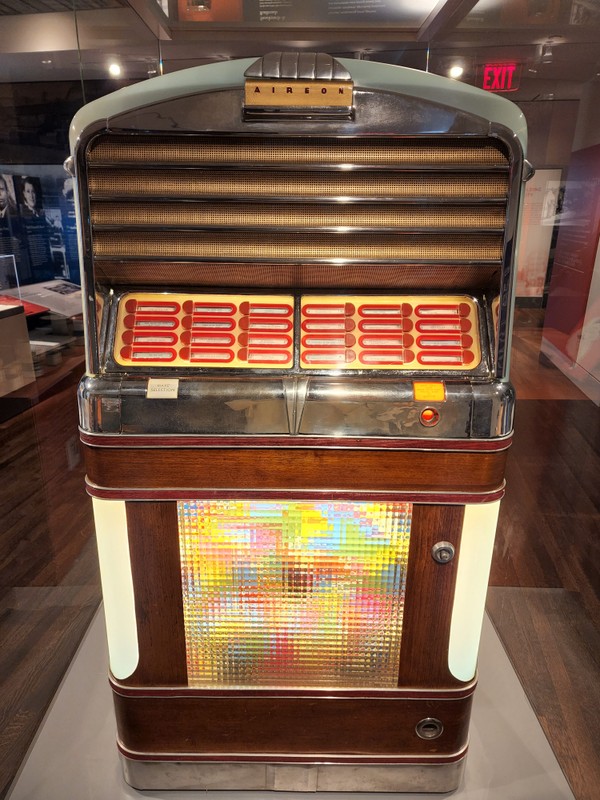
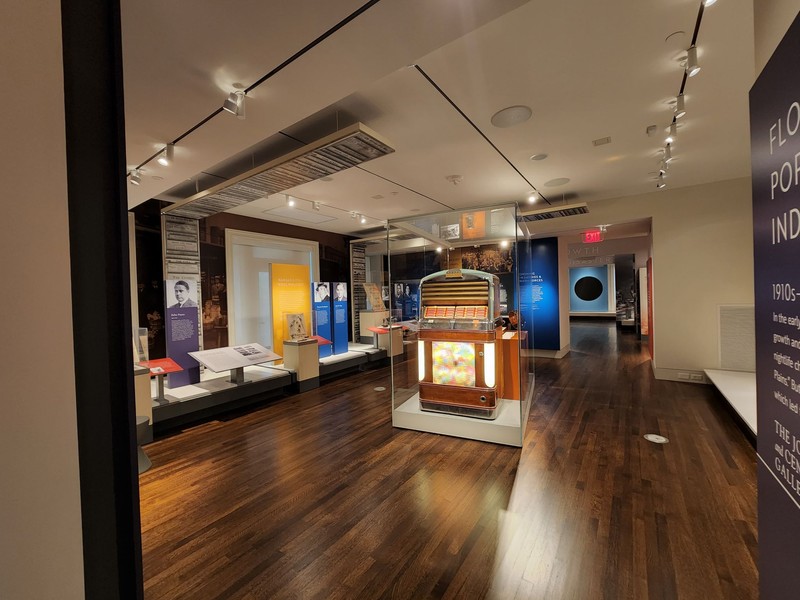
Backstory and Context
Text-to-speech Audio
In the early 20th century, the economy of the city grew along with Kansas City's reputation for entertainment and nightlife that led to the nickname "Paris of the Plains." The stockyards dominated the city's economy and industries in the early years of the 20th century, becoming the first million-dollar industry in the city. A diverse population of employees labored in the stockyards, with over 20,000 workers contributing to the city's movement into the modern age. Additional industries included railroads, automobile production, agricultural production, garment manufacturing, and meatpacking plants, all of which further contributed to Kansas City's economic and social landscape. Much like the stockyards, each industry sported employees of varying backgrounds and brought many immigrants to the area. Immigrants and people of color shaped the city throughout the 20th century, contributing heavily to its growth and success.
Immigration to Kansas City reached its height between the 1880s and the 1920s, leading to the development of ethnic neighborhoods. Most immigrants hailed from Mexico or varying parts of Europe. One such immigrant was Joseph Charles Cirese, Sr., for whom this gallery is named. Alone, Cirese immigrated to the United States from Italy at 12 years old. Over a decade later, he married Mary Nigro Gargotta, settling in northeast Kansas City. Joseph, Sr., and Mary had three children: Michael, Lucille, and Joseph. Cirese, Sr., made his name as an entrepreneur by founding Bulldog Battery, Universal Trailer, Eastside Electric and Plumbing, and Cirese Power and Light. He was also a founding shareholder and chairman for the Central Bank of Kansas City, still in operation today. Another prominent immigrant at this time was Rose Shklar Mindlin Jacobson, who emigrated from Russia at a young age in 1888. Rose opened a women's hat shop, Mindlin's, that grew in popularity, leading to the opening of three shops around the city. Her shopfront in the Country Club Plaza was the first store specifically for women in the shopping district, providing women with popular accessories of the time. Other influential immigrants included the midwife and traditional healer Juana Frausto-Castro, whose family served as the first Mexican immigrants located west of Broadway Boulevard, and composer Carl Busch, a Danish immigrant who became director of the Kansas City Philharmonic Symphony.
While immigrants and people of color contributed to the growth of industries in Kansas City, they also developed entertainment in the city that became nationally known. One such form of entertainment was Kansas City Jazz. The African American community in Kansas City influenced the city's jazz scene, developing a unique sound that separated Kansas City Jazz from New Orleans or Chicago Jazz. In the late 19th century into the early 20th century, most of the nightclubs in the city were found on 12th Street. Later, the 18th and Vine district developed into an entertainment center for the African American community in Kansas City. Jazz musicians and their careers were protected through the formation of the Musicians Protective Union Local 627, otherwise known as the Colored Musicians Union. Many Jazz musicians such as Bennie Moton and Julia Lee contributed to the Kansas City style.
Bennie Moten was a founding member of the Negro Musician's Association and a highly celebrated big band leader of the 1920s. Moten toured the Southwest and Midwest with his first band, the B.B.&D. Trio, to promote Kansas City Jazz to people who may not have heard it before. Julia Lee had an impressive career that spanned four decades, her husky voice recognizable in the Jazz scene. Lee performed at the White House for President Harry S. Truman when he was in office, among other accomplishments she had throughout her career. There were many other jazz musicians that contributed to the Kansas City Jazz scene at the time, and the legacy of Jazz can be seen in the 18th and Vine district, where local leaders and community members have worked together to preserve cultural history in Kansas City.
Prohibition was a major backdrop for booming industry and the development of jazz and Kansas City became infamous for "Boss Politics" and government corruption. Prohibition did not appear to impact the sale or consumption of alcohol in Kansas City, and bootlegged liquor was readily available in the city. Police and politicians in the area tended to ignore Prohibition, and Kansans came to town to partake in alcoholic drinks, as Kansas had a prohibition on alcohol since 1881. During this time, Thomas J. Pendergast's beverage company produced sodas with room for the addition of alcohol by consumers. This was only the beginning of Pendergast's less than legal means of operation. He would become the political "Boss" of Kansas City for over a decade.
"Boss politics" were not a new phenomenon when Tom Pendergast came into power. In fact, Kansas City had restructured its city government in hopes of preventing such politics and control from occurring. In 1925, the city adopted a council-manager government meant to reduce the power of the mayor. In this structure, a nine-member council would select a manager for the city. Unfortunately, this new structure did not work as originally planned, and corruption reigned supreme when the Jackson County Democratic Club, of which Pendergast was chairman, gained five council seats in the first election after government restructure. This imbalance gave Pendergast an upper-hand among council decisions, allowing him a great deal of power as mayor. Pendergast's political machine, one of the most powerful in the country, ruled Kansas City, leading to the city's new nickname of "Tom's Town." Pendergast controlled elections and the underworld of the city, establishing connections with immigrants and people of color he thought would be beneficial to his cause.
One such connection included Pendergast's interactions with sports promoter Felix Payne, a powerful Black businessman in the city. As an associate for Pendergast, Payne exercised his influence in the African American community to guarantee Pendergast and his chosen candidates received the majority of African American voters. Although associated with Pendergast's corruption, Payne had his own flourishing businesses, such as the "Kansas City American" newspaper and a nightclub. Pendergast's rule would not last forever, though. The Pendergast machine would end in 1939, after "Boss Tom" was imprisoned for income tax evasion, and John B. Gage became mayor in 1940. A candidate of the Forward Kansas City Committee, a group set on toppling the Pendergast machine, Gage served three mayoral terms focusing on economic improvements for the near-bankrupt city and removing any remaining corruption left from the Pendergast era.
Businessmen and women flourished in Kansas City throughout this period, and women gained more autonomy and voice in Kansas City society through Women's Suffrage under the passage of the 19th Amendment. It is important to note that the 19th Amendment did not apply to women of color, and it would be years before voting rights were granted to all women, not only white women. Nell Donnelly Reed was a successful businesswoman in Kansas City, founding the Donnelly Garment Company in 1919 which mass-produced women's ready-made dresses. Although providing many benefits for her employees, she was adamantly against the formation of a union amongst her workers, and would fire anyone who attempted to join one. She was especially against the International Ladies Garment Workers Union. The "Barbecue King" Henry Perry was another successful business owner in Kansas City. He opened the first Kansas City barbecue place in the early 20th century in the Garment District, serving as the foundation for later barbecue joints in the city, such as Arthur Bryant's Barbecue and Gates BBQ. Kansas City barbecue is now nationally known and highly popular.
The first half of the 20th century saw many changes for Kansas City that developed a lasting foundation for the city still seen today. Immigrants, the working class, African Americans, and additional people and communities of color contributed heavily to the industry boom in the early 1900s, and contributed to the city's cultural heritage. Although Kansas City had an infamous history of political corruption throughout the 1920s and 1930s, changes were made to improve the city's reputation throughout the second half of the 20th century.
Sources
Kansas City Museum, 3218 Gladstone Blvd., Kansas City, MO, 64123 (accessed March 8, 2022). Wall Plaques: Wall text. The Joseph Charles Cirese, Sr., and Central Bank of Kansas City Gallery, Kansas City Museum, Kansas City, Missouri.
